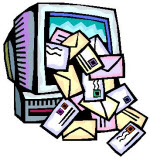Usually people subscribe to your emails because they want information. This is particularly true for B2B marketers, with the longer sales cycle that requires an education period. But it’s also true for B2C marketers whose prospects seek information along the lines of special offers and pricing. It’s still information, whether it’s tips, recipes or coupons.
Understand that that’s the mindset of the subscriber: They are handing over an email address to you, and that email address has a perceived value. They offer it in exchange for information from you. They expect you to deliver on your end of the exchange by providing the information they seek, whether it’s the latest on the CRM platform your company supports or this week’s cosmetics special.
If you don’t deliver, you risk unsubscribes, spam complaints and a lack of engagement the ISPs will perceive as a strike against you.
Here’s our advice as an email consultancy: Be sure to deliver what they expect so they feel satisfied and don’t suffer an email marketing version of Buyer’s Remorse…regretting that they ever “paid” you with their email address, because they’re not getting what they expected in return.
That sounds easy, right? Offer something, then follow through. You know, follow simple, standard email marketing best practices (as well as good manners). Sadly we don’t always do this. Even today in the age of engagement, email marketers are guilty of sending emails devoid of value or substance. These are a form of fluff, a way to feel like one is doing something worthwhile (marketing) when really one is doing something detrimental (cluttering).
If your next email marketing campaign is simply a send sans substance, don’t even send it. Stop. Rethink. Consider the subscriber and what they not only want to get from you, but expect to get from you. Really put yourself in their shoes and be sure the email you plan to send isn’t self-serving. Be subscriber centric. If you need some objectivity and a fresh set of eyes to review your program, call on an email consultancy to help. It’s better to get an email expert chiming in than it is to get subscribers tuning out.
Don’t just send email to send email. You’re better off staying out of the inbox and out of the way, to send again another day when you have something of value to offer.




